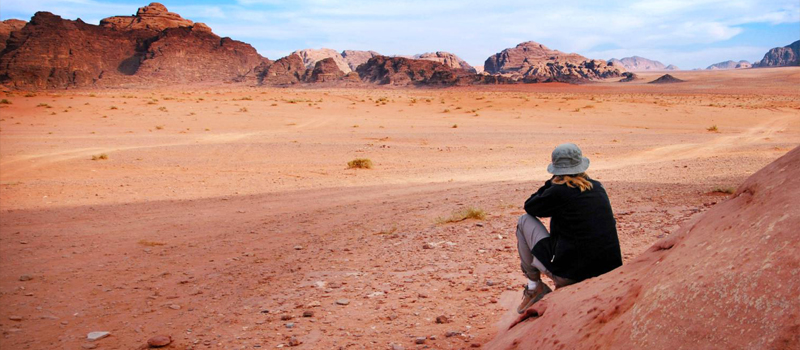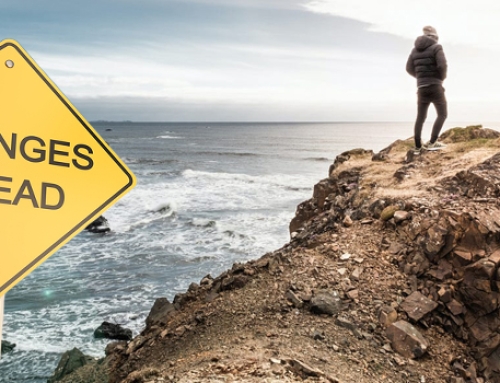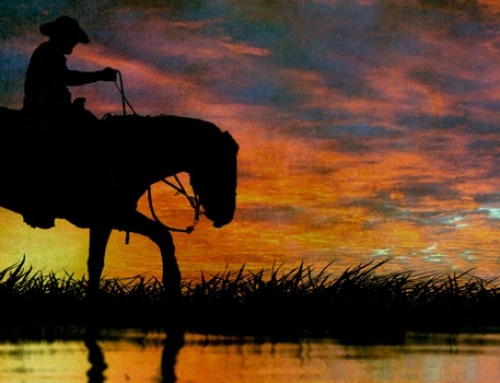Generally speaking, people are happy with where they are living. Or happy enough, as it might be. When it comes to being self-sufficient and having the right planning and production in place that may change their desired landscape. No matter where you are presently residing there are positives and negatives to each Urban, Sub-Urban, and Rural living.
When it comes to where you are and where you want to be, it takes some forethought and planning on what you, ultimately, will be willing to do. A million scenarios can play out. It can be easy to get distracted and miss out on small but important factors. This post is going to cover a lot. I hope it helps you consider your situation and improve your plan or even get started planning your permanent location or how to settle on where to camp each night when you are getting out of the proverbial Dodge if you plan on being nomadic.
Everyone has unique factors to consider when it comes to your plan. There is no one size fits all strategy. Conditions can change rapidly.
Rural Versus Urban
In each area, there are ways to blend in, to be inconspicuous to others in a time of heightened calamity. In the rural areas, things can be distanced and scattered. Your ability to travel to and fro is an important component to plan for. Also, your physical protection will nearly be entirely up to you. Because of the distances and scarce populations, your sheriff may be hard to find. Although gear and resources may be less plentiful, what is there to be had in a rural area there will be less competition for it. Where you plant your flag, so to speak, also needs to consider how out there you may be. Things need to be secured properly from the wandering vagabonds that may happen upon it. If you haven’t had a chance to get out and experience roughing it in the bush, it might take a while to get adjusted.
I think some of the basic considerations are the same but in an urban situation.
There can be a lot of nooks and crannies to hide in a big city, maybe too many. There are a lot more people to compete with for what’s on store shelves and only so many routes to get supplies in. or supplies to go around. With a large starting population, supplies may not actually make it very far or be enough for the remaining with so many desperate people along the incoming route.
Abandoned highrises, large warehouses, and other locations could be places of refuge but staying under the radar in an urban area seems like it would be challenging for even a single person, let alone a family. The density and potential for running out of supplies quickly in urban areas is part of why so many people plan on getting out if there is the potential for long-term problems.
One Night Camping Versus Semi-Permanent Location
Depending on the severity of the calamity that hits, and the perceived and real dangers that present themselves you may want to consider (no matter where you now reside) to hunker down or bugger out. Now we don’t think that an all-out war and mayhem will be on the table in the near future. But most certainly, a financial meltdown, a societal breakdown, or a dissolution of community norms may be the facilitator to pulling the proverbial trigger on these plans of yours. We know from past catastrophes, that those who hesitated too long in moving out of the line of danger suffered life-ending consequences.
Now, if your plan is to bug out, getting out of the way of the destruction running amok, if you are far out in the countryside and it seems like there is not another soul around then you might risk setting up a temp one night camp in a place that would be unsuitable for a long-term camp. That first night on the trail you may have experienced trauma or stressful circumstances that mean you cannot physically make it to a better location. Fatigue can kill so if you feel like you need to stop and there seems to be no truly imminent danger then this might be a good plan. You have to remain vigilant of your surroundings.
The same holds true if you are coming from the city. The further you get out of population centers, you may have more opportunities to set up a temp camp. But if you don’t feel safe or secure you certainly need to have your head on a swivel.
With all of that said, there is very little that you can do when you are on the run. Very little that you can carry, plan for, or anticipate. There will come a time that you will need to consider a semi-permanent location. A place that you can build up your supplies, gather yourself or your loved ones, or at the very least be able to refresh your current stocks and gear.
In the event that you are considering a semi-permanent location, it is all about the neighborhood. And when you look at it, there are just too many variables that are uncontrollable in a city-dwelling versus a country locale. However, you decide for yourself the risks you want to take and the familiarity of your surroundings may play a part in your decision.
In the case of a rural setting for that semi-permanent location, there are several more things you need to consider when you look to put down roots.
Defensive Positions and Deteriorating Conditions
In a rural setting, you may not have as many of those built-in defenses as you may have in the big city. Although, if you are lucky you may be able to get some very good natural barriers and defenses going in your favor. In fact, with the proper prep work your rural surroundings can be done up just right to ward off the unwelcomed and the violent. During tough times you do not want to let your guard down. The longer an emergency situation lasts the greater the chance that anyone left is going to turn to violent acts or become desperate and do things they never thought possible. It is amazing just how far this can go. And we all can read from the history books the lengths some have in the past have taken to survive.
In the city setting, you definitely have all sorts of things and objects you can use for your fortifications (if things got to a desperate point). There are ways to quickly set things so that you and those you know can get in and be secure. Again it is all in the planning and your ability to get or have the supplies that allow you to do this as safely as possible. Perhaps, in the larger numbers, you will be able to team up with a larger group and in those numbers find safety. Regardless of where you are at in the asphalt jungle or out in the boonies your physical safety needs to be high on your priority list.
Access to Water and Vulnerability
We all know that you can’t last past 3 or so days without water. And if drinking your own urine just doesn’t seem appealing, then you have to consider where your water may come from WHEREVER you may be. You can deal with a pretty contaminated source of water if you have a good filter. That is why we recommend you have one in your bug out bags ( Check out the First Combo eBooks here) Regardless, you need to be able to get to water in a reasonable amount of time. At the same time, you do not want to set up camp too close to a major go-to point for water if you want to avoid major interaction with others whatever may be their intents.
If you are really far out in the countryside then this might not matter as much. Usually, there is a water source relatively close (a few hours walking distance at least) You do need to keep in mind that places that were once low traffic could become more heavily trafficked in an after-catastrophe scenario. If good water points are limited than you might find that people use these spots to attempt to ambush others. This is an old trick. Water spots and places where they were boiling water to get salt were extremely dangerous during the old days.
In the big metropolis, sources of water may be those places to avoid. At least the ones you think of readily. But don’t let your imagination go to waste if you find yourself there. Toilet tanks, water heaters, and such the like are often overlooked. Watch for stagnated water that has had some unwelcomed additions. Again, a great filter will save your bacon more than once.
Access To Food Supply
Food is truly in the eye of the beholder. There are some things that one person may not even consider a food source, while another will be more ready to try it out. Now, let us put this into context. It has been shown in movies and t.v. shows that some have a desperation to resort to preying on their fellowman. We would and will never consider or mention it again… Food sources that all can look towards without taking their eternal existence into consideration as well.
So food can be tricky because it can vary so much based on the following factors. You on the move? You looking to stay put? Are you in relative safety? Can you consider longer-term growing options? Etc, etc, etc
No matter where you find yourself, what are your resources at hand? How much food do you have? Can you make it to a better or safer place to resupply? Do you have supplies, skills, or resources to offer others in exchange? While I think you should have at least two weeks of food on you for bugging out if at all possible, at some point you are going to need to find a source of supplies. You might be able to extend how long you can stay in the boondocks by knowing how to forage.
The viability of foraging during a SHTF scenario depends on overall availability at the time of the event and as time goes on, how others react to the event.
If times get tough, the game and wild forage can become a lot more scarce in the more populated areas. We live in a world where there seems to be plenty.The population we can support during good or what is considered normal times is not what we can support if it comes down to having to find a portion of your food or grow it yourself.
It’s Time to Get Out of Dodge – Joining Up With Others: Yes or No?
During a catastrophe, there can be strength in numbers but you must be careful about who you trust. You never truly know how people will act once life and limb are put on the table. Hard times bring out in people the most base in us all, and you must think long and hard about who you keep connected with.
Family members are often where it can be a crap-shoot. Some and most of your loved ones are going to be fine in the interactions you would have in a disaster scenario. It is those who are exceptions; who have already shown they are untrustworthy or have weak wills and constitutions (by their own choices NOT by their age or stature in the group). Those who exert selfishness at every turn, where their self-interest will always dominate them. You will have to decide whether they come with you, or are left behind.
On the other hand, if you can find some like-minded and similarly prepared individuals or even a place where they are more prepared and need help then you might think about your options. A long-term emergency could be a tough go alone but you also don’t want to be part of a group that is going to take advantage. If that happens, then slipping off into the night and starting again on your own may be the best scenario.
Fire Safety & Exposing Your Position
No matter the season you find yourself in, there will always be a need for a fire when you are on the move. While the danger of wildfire is something to consider you also need to think about how it will attract attention. There are many things to consider when you set up a camp, no matter for how long. The aspect that you set your camp up at can help but for times like this, you may consider only cooking at night or possibly having some clean-burning fuel for your survival stove on hand.
The smells of cooking food and smoke can attract unwanted attention. Especially at night when the flames can be more easily seen. Those first few days out you may want to try to avoid any food cooking if you suspect others are around that you don’t want to attract the attention of. The other side of this is that there may be others that feel the same way you do and want to avoid any contact so even if they have something to tell them someone is in the area, they might avoid you as much as they can. Usually, a good rule to live by in this type of situation is you either get a hot meal (with the fire) or you get a good night’s sleep (without the fire).
Animals At A Bug Out Camp
Animals can be a help or a hinder, and you decide which amount of risk you are willing to take. For instance, there are two ways to look at having a dog with you. First off they are an asset in terms of protection and alerting you to any encroachments into your area. They also offer companionship and morale support. The negatives are that the barking can alert others to your presence too. I would say, it depends on the dog. If it has any smarts and can be quickly trained, keep it; if it is just a yapper and afraid of its own shadow… don’t keep it.
You also have to have a way to feed and support a dog in your survival situation. The smell and scent marking/urination a dog does can help repel unwanted wildlife from your camp as well which is a major bonus. In your bug-out bags, you can look to accommodate the needs of your dog.
The right type of dog could be an asset as a hunting dog for small game. This could benefit you both by providing some extra protein for you as well as making it easier to feed your dog in the wild. Alsatian, Hound, or otherwise keep them. But if all that you’ve had is a lil Chihuahua or a Maltese, not a wise choice at all to bring along.
Question: What direction should your camp face?
How and where you set up your camp, temporarily or otherwise, there are as I mentioned many things to consider. The way your camp faces and its location can help protect you from inclement weather. Putting your semi-permanent or temporary camp in a protected spot can significantly increase your comfort and sometimes your chances of survival, especially if overtaken by a major storm.
Weather Considerations
No one can tell what season you are going to need to get out of Dodge, how warm or pleasant it is going to be when bugging out. This means you have to plan for all seasons if you want to be truly prepared for whatever nature throws at you.
You can get away with camping most anywhere during the warmer parts of the year but do not be fooled into thinking you can not suffer or even die from exposure when it is 60 degrees and raining and you get wet and cannot get warm.
Dying from exposure can be a very real thing. So the shelter you bring with you, or that you make on the spot needs to be: out of the elements (wind, rain, and of course the snow); needs to be able to contain warmth (from a heating source or from body heat); concealable from predators (man or beast).
Knowing When It’s Time To Move your Camp
At times you aren’t going to have a choice. In a time of catastrophe, impending dangers usually dictate how long you stay in one place. But as the dangers start to be less, you will need to have a “sixth sense” about when your welcome has been exhausted. While it feels good to stay in one place, you can’t let comfort be the deciding factor. In fact, comfort should be the last thing you think of until you actually reach the place that you want to hunker down.
Exposure
It isn’t just to the elements you need to consider your exposure, but also to others who may not have your best interest in mind. You need to be fully aware of what is happening around you and where you might be vulnerable.
Fuel
Heating up food and water takes fuel. Even if you have a few fuel canisters on hand to get you through times when fire is not the path you want to take, there will come a time when you need something else.
Some areas have more renewable fuel available than others. Dried and downed wood is a big help but at the very least you need some access to wood that you can cut and dry if you are setting up a more long-term camp.
Moving Around A Lot: Advantages & Disadvantages
Now, moving around a lot can help when it comes to avoiding detection or anyone looking too closely at who you are and what you have. If you are in a family group it can be harder to move around especially if you have young kids that can only make so much in a day or need you to literally carry them. Remember, the pioneers usually had wagons, and it was still a harsh way to live.
A permanent or semi-permanent camp may be best if conditions are amenable to it. Moving around a lot during frigid temps might not be the best idea if you can establish a good base camp and create some structures that help to protect from the weather.
Even those major military battles in ancient times, thought twice when it came to winter campaigns, and they had a full army behind them. When it is just you and a few others it is wise to be able to find a place where you can be safe, and secure.
Be Open To Strategical Changes
As we all know, circumstances can change rapidly and that means you need to be open to changing your strategy accordingly. Keep your head on a swivel, and stay frosty. Have a plan, and a place in mind, but look for those same circumstances in other places as well, you may need more than one place to move to. It may actually be easier when you know you are in a situation and know that you need to be on top of your game.
Planning A Bug Out to a Staged Location
We’ve talked about what you need to do when you are on the go. We want you to also consider and plan for when you are able to stay in one location.
Location
Remote is a relative term. There are a few places in the USA still that you can get a property that is away from a major town. There are a few things to keep in mind though when planning a long-term permanent bug-out location. It needs to be as far away from major metropolitan areas as possible, making it inconvenient to get there by any mode of transportation (especially walking). BUT, needs to be close enough to major thoroughfares to enable a quick-enough getaway if needs be.
How long can you last with the supplies you have? What comes after that?
It is not only about what you have preserved or stored, but also what you can produce as well. How many supplies are you prepared to have? Regardless of how well-stocked you are, you will eventually need to be able to get somewhere to either buy or barter for more stuff. Again close enough that you can now reach the markets, and make it inconvenient to get to in a time of extreme crisis.
Right now, ordering by delivery is easy. But when systems break down, one of the first will be the mailing system. Supplies could also become more scarce in some parts of the country rather than others. Are you going to be where you are at the end of the supply chain? What do you have in place to take care of your daily food, clothing, shelter needs?
There is a lot of talk about alternative fuels. That petroleum-based products are bad for the environment, yada, yada, yada. There is some weight to the alternatives though. Gas and Diesel may become rare if not impossible to obtain, but you may be able to get your hands on propane, or natural gas, or coal, and yes even solar or power from a windmill or watermill. Be aware of how to get those things to meet your heating or machinery requirements.
Climate
There are challenges to be met in any climate but those that are bugging out to and looking to set up a homestead. Going into a climate that has an extreme cold and a short growing season seems to have it the worst. It takes a lot of fuel and food to stay warm and fed. Hot climate challenges can include drought, parasites, and an increased chance of infection and disease. Find your sweet spot, or as close to your sweet spot as possible.
Defensive Position
Is your camp close enough that any mass exodus from a nearby city might cause you trouble? Do you have natural occurring barriers to accessing your shelter? Do you need to build up walls, or obstacles that hinder easier access to where you lay your head, keep your food, and do your business?
What tools do you have for your defense? In times before the disaster, a handgun, baseball bat, or tennis racket may be sufficient. Do you have anything else when the situations become more dire? Are you able to make more, or are you trained on the use of each of them? Are you prepared to defend as you need to if someone else comes along and wants what you have, no matter what?
How you defend yourself is more than just physically, you need to prepare and train yourself as well mentally and emotionally to the facts in a do-or-die scenario.
Stocking A Remote Camp or Cabin
as you have always heard, starting now rather than later is always best. If you are able to get a place that matches as well as possible your requirements in a time of chaos, The proper stocking and securing of that location is an action to take. Proper storage of supplies at a remote site can be a challenge if you don’t keep temps controlled. It’s not just other human beings, bugs and wildlife can also make it challenging. The shelf life of your preps is very dependent on how you store them. Don’t expect more perishable items like foods that contain meat or dairy to last near the shelf life they claim if you don’t have control over the temperatures. There are some storage containers that can be buried but I recommend having a system for remembering where you stashed them.
You need to consider also what your long-term needs are as well, and put systems in place (Aquaponics anyone?) that can help you to maintain your quality of life as you will know it. And this isn’t just for what fills your belly, it can also be for the tools, or equipment you are using, the metals, or woods, or animals and their hides.
Water
Hopefully, you have spring or creek access at the very least. Before the Crap Hitting The Fan Event, your land needs to not only have water rights but also have a working well on the land, in relatively close proximity to your shelter.
If not then above groundwater that is very close is a factor you need to consider. Hauling water is something that can get old, and tiresome very quickly.
Don’t Expect Your Family To Be Mind Readers Or Be Prodigies: Teach Them Survival NOW!
I hear a lot of comments from people that where one spouse or partner is not on board with prepping and planning for major catastrophes, but the kids and teens are even worse.
Beyond the invincibility that kids, teens, and grown-ups think they have, it is more about incorporating it into daily activities and pursuits. When learning something new in the self-reliance arena, especially when the relationship is new, or the kids are young bring them along, include them in the learning processes. You may find it very enjoyable to do these actions together as a couple and family.
These are the Basics
We could (and probably will) fill a whole book on what you need to do to be ready, truly ready for what may be coming down the pike. We wanted to highlight here the basics so that you can not only get thinking about what needs to be done but also take some action towards it all.
I have been in a few natural disasters and that alone is enough to convince me that prepping for the calamity is worth it for anyone.
Just look at the situation in Puerto Rico and the challenges that they are still facing. The Puerto Rico hurricane disaster made a lot of people consider just how prepared they actually are.
Have you given a lot of thought to bug out camp planning? Have you bought land specifically to have a getaway? What steps have you taken to show your family the skills they need to have?






